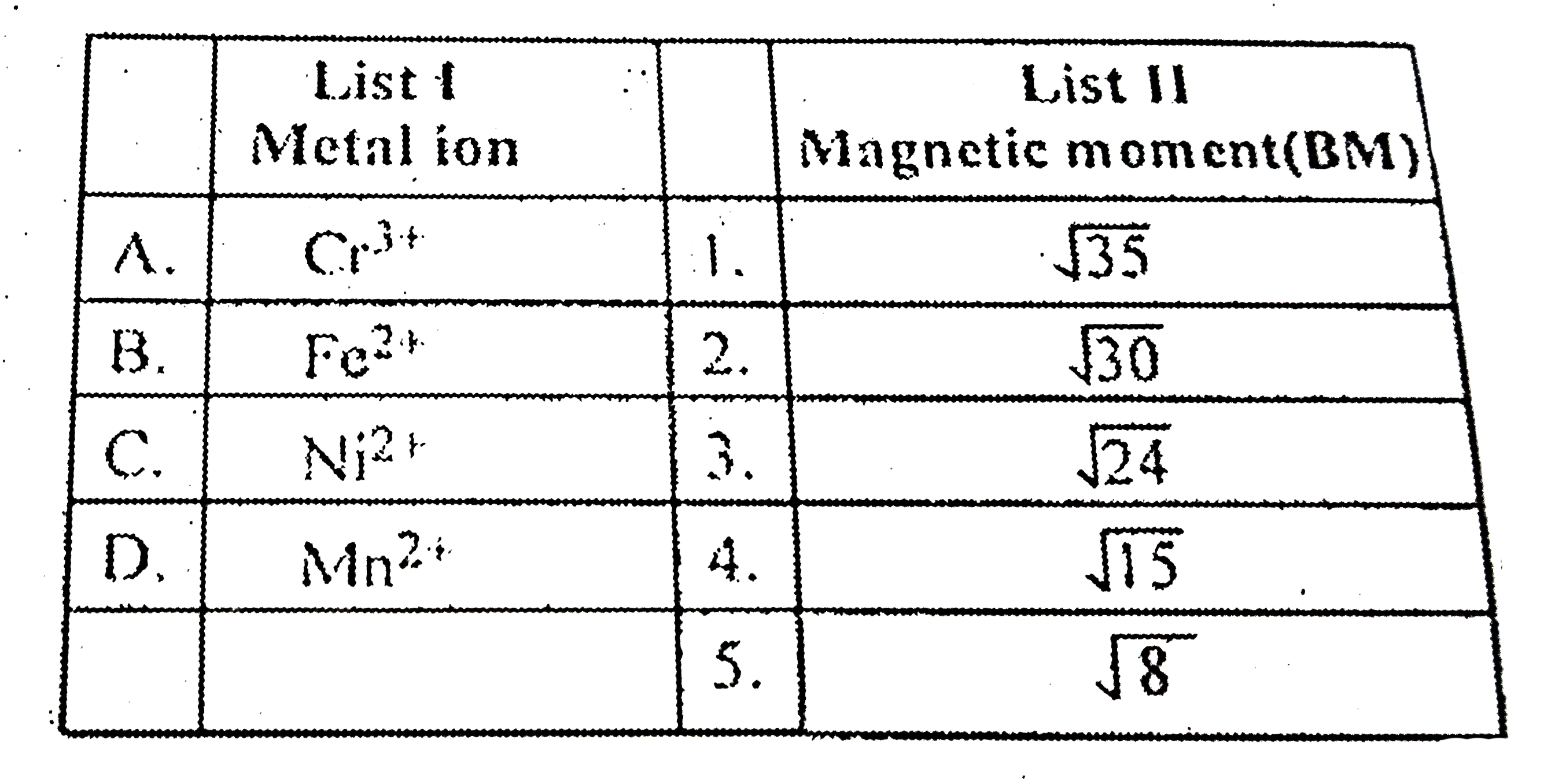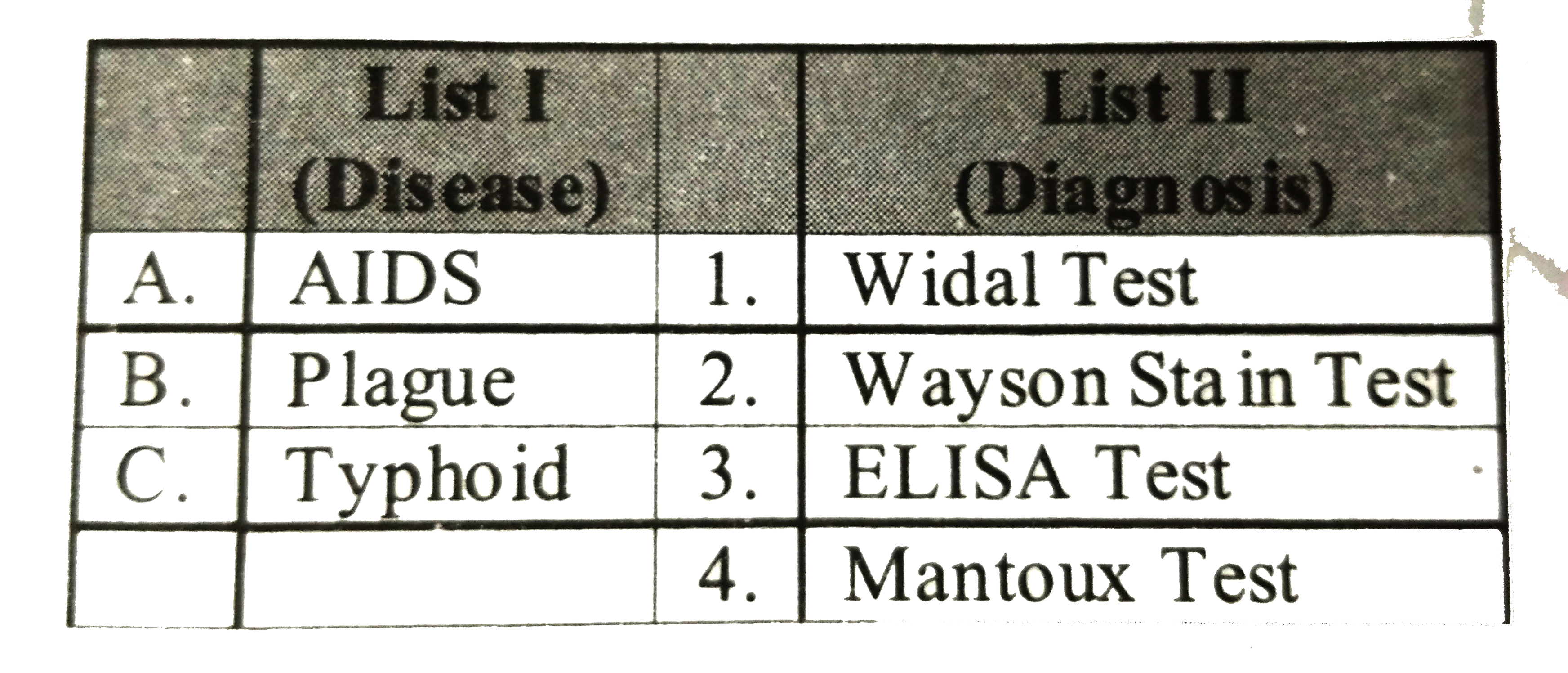Match the List -I ( Colloidal dispersion ) with List -II ( Nature of the dispersion ) and Select the correct answer using the codes given below the lists .
A-4, B-2 , C-1, D-5
A-1,B-5, C-3, D-2
A-4 , B-5 C,-3, D-2
A-1 , B-2, C-3 ,D-5
The correct Answer is:A
To solve the problem of matching the colloidal dispersions from List-I with their corresponding nature of dispersion from List-II, we will analyze each item step by step.
1. Identify the Colloidal Dispersion for A (Milk):
- Milk is an emulsion, which is a type of colloid.
- In milk, the disperse phase is liquid (fat globules) and the dispersion medium is also liquid (water).
- Therefore, milk matches with (4) Liquid in Liquid.
2. Identify the Colloidal Dispersion for B (Clouds):
- Clouds are an example of an aerosol, which is another type of colloid.
- In clouds, the disperse phase is liquid (water droplets) and the dispersion medium is gas (air).
- Thus, clouds match with (2) Liquid in Gas.
3. Identify the Colloidal Dispersion for C (Paints):
- Paints are classified as sols, which are colloidal systems.
- In paints, the disperse phase is solid (pigment particles) and the dispersion medium is liquid (solvent).
- Therefore, paints match with (1) Solid in Liquid.
4. Identify the Colloidal Dispersion for D (Jellies):
- Jellies are also a type of colloid, specifically a gel.
- In jellies, the disperse phase is liquid (water) and the dispersion medium is solid (gel structure).
- Hence, jellies match with (5) Liquid in Solid.
Final Matching:
- A (Milk) → (4) Liquid in Liquid
- B (Clouds) → (2) Liquid in Gas
- C (Paints) → (1) Solid in Liquid
- D (Jellies) → (5) Liquid in Solid
Answer:
The correct matching is:
- A - 4
- B - 2
- C - 1
- D - 5
- Milk is an emulsion, which is a type of colloid.
- In milk, the disperse phase is liquid (fat globules) and the dispersion medium is also liquid (water).
- Therefore, milk matches with (4) Liquid in Liquid.
- Clouds are an example of an aerosol, which is another type of colloid.
- In clouds, the disperse phase is liquid (water droplets) and the dispersion medium is gas (air).
- Thus, clouds match with (2) Liquid in Gas.
- Paints are classified as sols, which are colloidal systems.
- In paints, the disperse phase is solid (pigment particles) and the dispersion medium is liquid (solvent).
- Therefore, paints match with (1) Solid in Liquid.
- Jellies are also a type of colloid, specifically a gel.
- In jellies, the disperse phase is liquid (water) and the dispersion medium is solid (gel structure).
- Hence, jellies match with (5) Liquid in Solid.
- A (Milk) → (4) Liquid in Liquid
- B (Clouds) → (2) Liquid in Gas
- C (Paints) → (1) Solid in Liquid
- D (Jellies) → (5) Liquid in Solid
The correct matching is:
- A - 4
- B - 2
- C - 1
- D - 5
Topper's Solved these Questions
- SURFACE CHEMISTRY BOOK - NARAYNACHAPTER - SURFACE CHEMISTRY EXERCISE - EXERCISE -2 (H.W. ) ADSORPTION
5 Videos
- SURFACE CHEMISTRY BOOK - NARAYNACHAPTER - SURFACE CHEMISTRY EXERCISE - EXERCISE -2 (H.W. ) CATALYSIS
5 Videos
- SURFACE CHEMISTRY BOOK - NARAYNACHAPTER - SURFACE CHEMISTRY EXERCISE - EXERCISE -2 (C.W. ) ADSORPTION
23 Videos
- SOLUTIONS & COLLIGATIVE PROPERTIES BOOK - NARAYNACHAPTER - SOLUTIONS & COLLIGATIVE PROPERTIES EXERCISE - EXERCISE : 4
26 Videos
Similar Questions
Knowledge Check
Match List I with List II and select the correct answer using the codes given below the lists:
 AabcdsrpqBabcdsrqpCabcdrsqpDabcdrspq
AabcdsrpqBabcdsrqpCabcdrsqpDabcdrspqMatch List I with List II and select the correct answer using the codes given below the lists:
 AabcdsrpqBabcdsrqpCabcdrsqpDabcdrspq
AabcdsrpqBabcdsrqpCabcdrsqpDabcdrspqMatch list I with list II and select the correct answer using the codes given below the lists.
 APQRS3412BPQRS1243CPQRS3321DPQRS2314
APQRS3412BPQRS1243CPQRS3321DPQRS2314
Match List I with List II and select the correct answer using the code given below the lists

View SolutionMatch List I with List II and select the correct answer using the code given below the list:

View SolutionMatch list I with List II and select the correct answer using the codes given below the lists.

View SolutionMatch list I with List II and select the correct answer using the code given below the lists

View SolutionMatch List I with List II and select the correct answer using the code given below the lists:

View Solution


